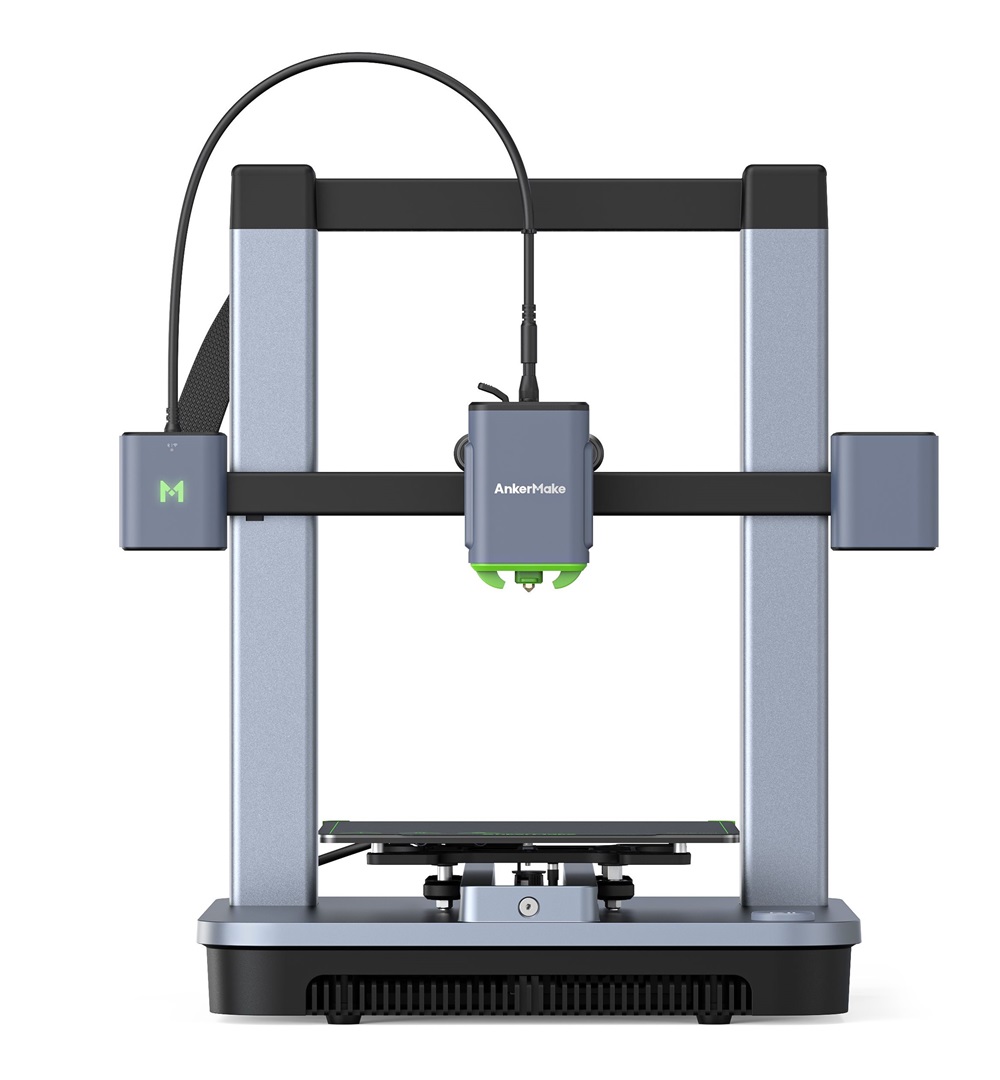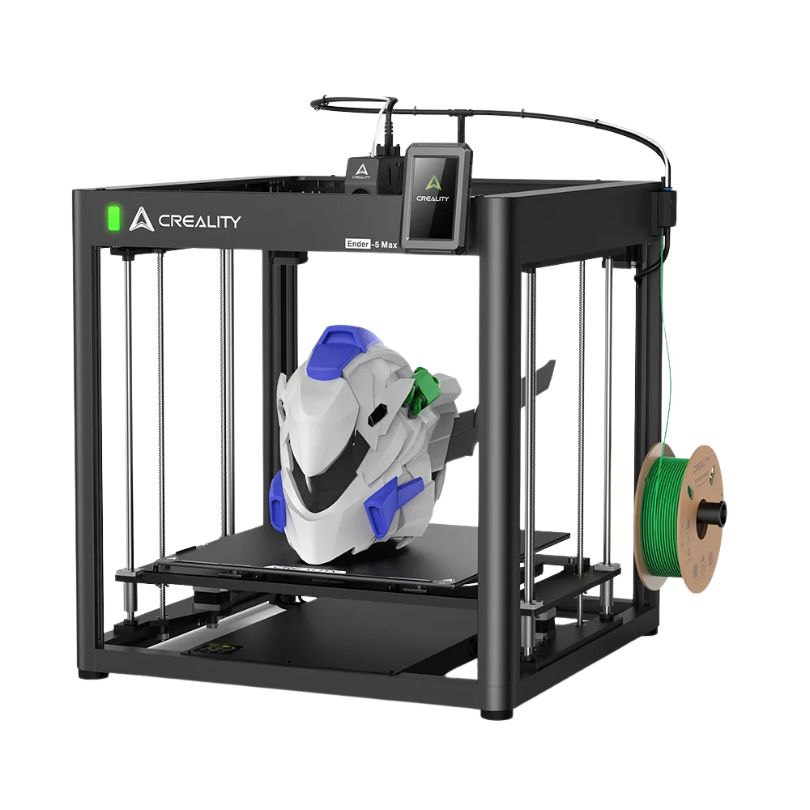Compare M5C vs Ender 5 Max
Comparison between the best 3D printers
Choose the best 3D printer at the best price. The cheapest 3D printers are here.
Buy a 3D printer here with 3D Fila.
 |
 |
|
| Model | M5C[BUY M5C] |
Ender 5 Max |
| Printing Material | Filament | Filament |
| Buy Filament for AnkerMake M5C | Buy Filament forCreality Ender 5 Max | |
| Estimated price | $399,00 | $769,00 |
| Manufacturer | AnkerMake | Creality |
| Release Year | 2023 | 2025 |
| Print Volume [mm] | 220x220x250 | 400x400x400 |
| Printer Size [mm] | 466x374x480 | 649x721x850 |
| Weight [kg] | 9,6 | 25,9 |
| Power Loss Recovery | YES | YES |
| Enclosed printer | NO | NO |
| Bed Leveling | Automatic | Automatic |
| Filament End Sensor | YES | YES |
| Bed type | Heated | Heated |
| Power supply system | Direct Drive | Direct Drive |
| Standard nozzle | 0,4 | 0,4 |
| Maximum Nozzle Temperature [°C] | 300 | 300 |
| Maximum Bed Temperature [°C] | 100 | 100 |
| Maximum printing speed [mm/s] | 500 | 700 |
| Filament holder | YES | YES |
| Camera for supervision | NO | NO |
| Recommended filaments | PLA, PETG, TPU, ABS, PA, PLA-CF, PETG-CF, PA-CF | Hyper PLA/PLA/PETG/TPU95A/ABS/ASA/PLA-CF/PA/PLA-Silk |
| Recommended slicers | AnkerMake Studio (macOS, Windows), Simplify3D, Ultimaker Cura, PrusaSlicer | Creality Print 5.1 |
| Maximum Resolution [mm] | 0,1 | 0,1 |
| Processor | ||
| Display | Touchscreen 4,3'' | |
| Power Supply | 350 W | 1250 W |
| Connectivity | Wi-Fi, USB-C, Bluetooth | USB, Wifi |
| Operating systems | Windows, Linux e Macbook | Windows |
| Date of registration in the system | 2024-09-11 | 2025-02-18 |
| Release date | 2023 | 2025 |
| Extra features | The AnkerMake M5 printer stands out for its impressive print speed, reaching up to 500mm/s. It features AI print monitoring, an integrated camera for creating timelapses, auto-leveling bed with pressure sensor, direct extruder, flexible PEI-coated build plate, and Wi-Fi and USB-C connectivity. Assembly is quick and easy, and the printer is designed to deliver high print quality and ease of use. | The Ender 5 Max by Creality features a 400 x 400 x 400 mm build volume, a rigid aluminum frame, and 36-point auto bed leveling. With speeds up to 700 mm/s, it boasts a hardened dual-gear extruder and a 1000W heated bed, reaching 80°C in just 200 seconds. It supports remote management via WLAN, a tri-color status indicator, and quiet operation, making it ideal for high-precision, high-productivity 3D printing. |
| Support for multiple colors and materials (AMS and CFS) | NO | NO |
Notes * |
||
| Cost-benefit | 7 / 10 | 7 / 10 |
| Hardware | 2.8 / 10 | 4.5 / 10 |
| Tela | . | . |
| Print volume | 3 / 10 | 4 / 10 |
| Performance | 4 / 10 | 6 / 10 |
| [BUY M5C] |
Conclusion |
| In comparing the AnkerMake M5C and the Creality Ender 5 Max, both 3D printers offer unique advantages depending on the user’s needs and budget. The AnkerMake M5C presents itself as a more affordable option with competitive features. It boasts impressive print speeds of up to 500mm/s, automatic bed leveling, and a compact design, which makes it suitable for hobbyists or those with limited space. Its user-friendly interface, quick assembly, and extensive filament compatibility cater well to beginner and intermediate users alike. However, its smaller print volume limits its applications for larger projects. On the other hand, the Ender 5 Max caters to users requiring larger print capabilities, offering a substantial print volume of 400x400x400 mm. While it comes at a higher price point, its build quality, advanced features like 36-point auto bed leveling, and fast heating times establish it as a more robust solution for serious enthusiasts or professionals looking for precision and productivity. It also supports higher speeds, up to 700mm/s, which is an advantage for those focusing on efficiency. Both printers share features like power loss recovery and heated beds. However, the choice between the two ultimately boils down to budget and intended use. The M5C is ideal for those seeking a cost-effective, easy-to-use printer for smaller projects, while the Ender 5 Max is better suited for users willing to invest more for greater capabilities and larger-scale printing tasks. Overall, both printers rank equally in terms of cost-benefit, yet they cater to different segments of the 3D printing market. |

